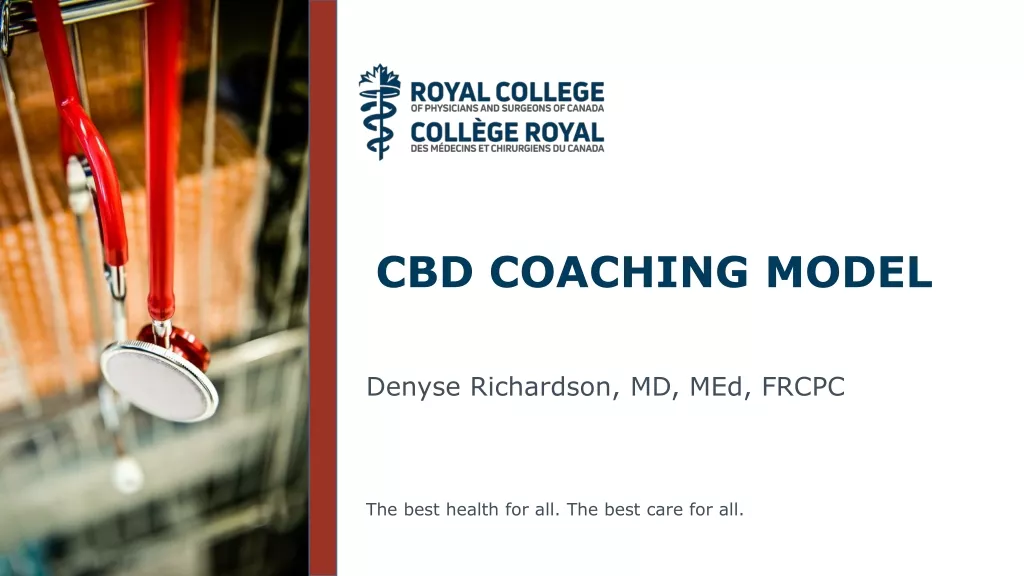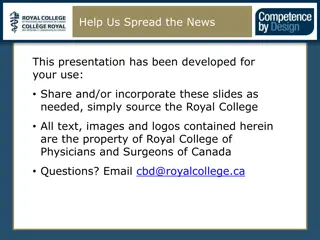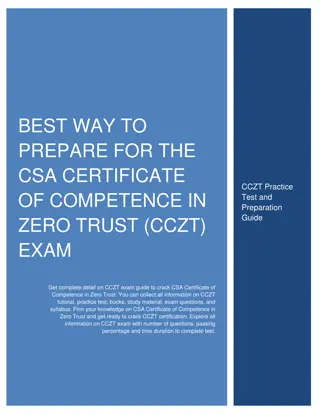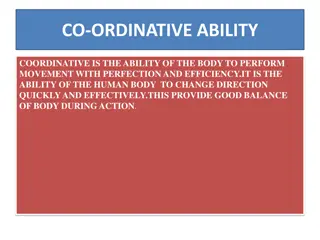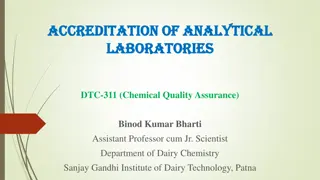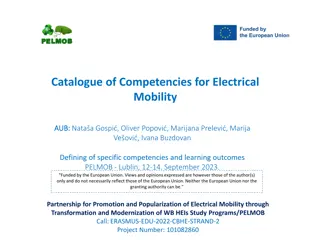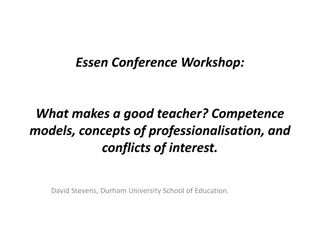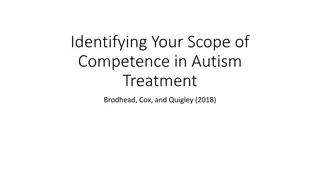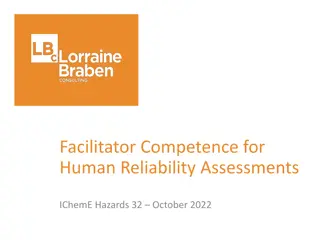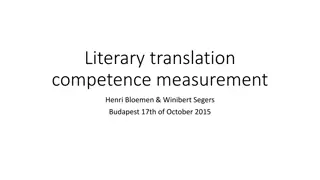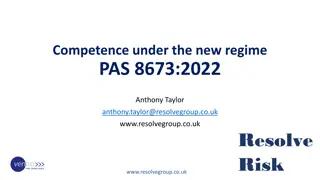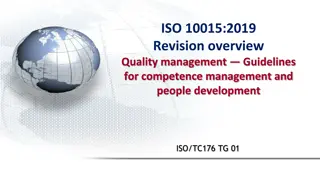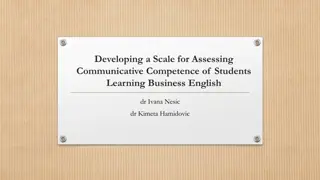Knowledge, Competence, and Ability Assessment
Differentiating between knowledge, skills, and abilities is crucial in assessing an individual's capabilities. The evaluation involves verifying qualifications, assessing practical applications, and conducting tests under supervision. Various checklists can aid in determining the depth and currency of knowledge possessed by an individual.
Uploaded on Apr 04, 2025 | 2 Views
Download Presentation

Please find below an Image/Link to download the presentation.
The content on the website is provided AS IS for your information and personal use only. It may not be sold, licensed, or shared on other websites without obtaining consent from the author.If you encounter any issues during the download, it is possible that the publisher has removed the file from their server.
You are allowed to download the files provided on this website for personal or commercial use, subject to the condition that they are used lawfully. All files are the property of their respective owners.
The content on the website is provided AS IS for your information and personal use only. It may not be sold, licensed, or shared on other websites without obtaining consent from the author.
E N D
Presentation Transcript
KNOWLEDGE AND SKILL/COMPETENCES ASSESSMENT PAULA BENEVENE UNIVERSIT LUMSA
KNOWLEDGE, COMPETENCE/SKILLS AND ABILITY Often a distinction is made between Knowledge = Knowing. It is the set of contents, theoretical and technical, as well as procedures, methodologies, concepts related to the work performed; Skills/competences = Know how. It consists in being able to concretely apply one or more theoretical knowledge by the worker Ability (or skills) = Knowing how to be. It is the critical, innovative use of skills and knowledge in complex organizational situations, where multiple elements interact with each other and it is necessary to make decisions and / or take responsibility. There is a circularity between these three levels which, whilst distinguishable on a theoretical level, are less easy to distinguish when transported to an operational level. Sometimes skills and competences are used interchangeably.
THE ASSESSMENT OF KNOWLEDGE The description of a knowledge must necessarily indicate the possible levels of depth. Verification is carried out by: Verification of the achievement of the qualification or in any case of a formal certification attesting the possession of the competence; Verification of any previous application of this knowledge, carried out during a significant period and in a situation where the use of such knowledge was necessary; The integration into the team of examiners of persons competent in the knowledge subject to verification (theoretical skills), or of persons holding the same organizational position (application or practical skills); Carrying out practical tests under the supervision of competent people; Especially if the group to be examined is very large, in the initial phase it can be useful to administer multiple choice questionnaires to verify the level of competences.
CHECKLIST TO VERIFY KNOWLEDGE (COCO, 2001) An example of Checklist: 1. Was the knowledge in question learned through a formalized education path and at what level? 2. In cases where the diploma or degree is related to the field of knowledge in question, how many years have passed since its attainment? 3. Has the person attended post-diploma or post-graduate training courses lasting more than one month in which the knowledge under examination was significantly treated? 4. Has the person attended courses, seminars also within the organization, specific conferences on the knowledge in question in the last 5 years and, if necessary, how many?
CHECKLIST TO VERIFY KNOWLEDGE (COCO, 2001) 5. How often is the person asked to apply this knowledge in your current job? 6. When he uses this knowledge he does so predominantly: Applying a few simple notions; Applying a limited number of different concepts; Applying different notions in an articulated way; Applying notions in complex contexts; Choosing and applying the concepts to be applied in new and poorly defined contexts.
CHECKLIST TO VERIFY KNOWLEDGE (COCO, 2001) 7. Do you read specialized press, books or other material relating to the knowledge in question? And possibly, how often? 8. How many years have you had this knowledge for? For how many years have you used it in your work? (data can be evaluated as long as it hasn't been too long) 9. Have you participated as a speaker in conferences, seminars, internal training activities related to this knowledge and, if necessary, with what annual frequency? 10. Has it provided significant contributions on the use of knowledge under consideration in services and organizational processes, in products? And possibly, what kind?
CHECKLIST TO VERIFY KNOWLEDGE (COCO, 2001) Why assessment is important? The purpose of the knowledge survey is to discover any gaps in order to be able to fill them, or to select the most suitable personnel. The incomplete correspondence between the level possessed and the level required does not exclude that the person can continue to carry out their work reliably, but since it is an effort that can wear out in the long run, it is advisable to arrange a training intervention. In addition to the knowledge necessary to fill the assigned positions, it may also be useful to collect the level of any other knowledge possessed but not used, useful to the company. In this way it is possible to have useful elements for any transfers, assignments of other offices, etc.
WHAT IS A PROFESSIONAL SKILL/COMPETENCE? There is still no single and universally shared definition of "professional skill/competence . Some definitions: Knowledge, skills and abilities that an individual possesses and demonstrates (Ullrich et alii, 1989). A manifest and evident dimension of behavior that allows a person to act competently (Woodruffe, 1993). An intrinsic individual trait CAUSALLY linked to superior performance in a job or situation (Spencer and Spencer, 1995). Capacity is the probability that the person has to successfully perform a task or, in broader terms, a job performance (Levati, 1992).
CATEGORIES OF SKILLS The professional figure can be broken down into skills which can be identified in three main categories: 1) Basic i.e. the elements necessary for insertion or reintegration into the world of work, as well as to adapt to its changes; 2) Technical-professional carrying out work activities; i.e. knowledge and techniques necessary for 3) Transversal i.e. all the personal characteristics, cognitive and behavioral skills that are required by the work environment (problem-solving, diagnostic and relationship skills, etc.)
SKILLS/ COMPETENCES AND BEHAVIORS Competence implies a generative capacity in which cognitive, social and behavioral skills must be organized and effectively orchestrated in the service of countless goals / objectives. There is a clear difference between possessing knowledge and skills and using them competently in various circumstances, many of which are characterized by ambiguous, unpredictable and stressful elements ... People often fail to perform optimally even if they know well what they have to do and have the skills to do it" (Bandura 1990) Despite the differences between the various definitions, competences ALWAYS refer to observable behaviors. BEHAVIORS: - are observable variables, more than others, such as personality traits; - must be neither too specific nor too broad and must be associated with successful performance; - identified when they are implemented.
SKILLS/ COMPETENCES The elements that make up the expression of competence (Coco, 2001): 1. The will / intentionality 2. The action 3. The result We speak of core competences or key abilities, when these competences are specific, peculiar and indispensable for a specific organization. Other times this term refers to necessary and essential skills for carrying out a specific professional profile.
TO EVALUATE THE POSSESSION OF A COMPETENCE IT IS NECESSARY TO: 1) identify (name) which skills you intend to assess. For example: "Ability to speak in public . 2) define each competence. Establish what the subject must "be able to do". For example: "Give a speech with easy words and elegant phrases, expressing your thoughts clearly and correctly in front of numerous interlocutors". 3) establish the indicators to detect their presence. They shouldn't be less than 3. For example: a) Ability to quickly and systematically prepare a topic on which to give a speech; b) Ability to explain the chosen themes in a coherent sequence and with a pleasant speech; c) Check with questions if the audience understand his/her speech.
TO EVALUATE THE POSSESSION OF A COMPETENCE IT IS NECESSARY TO: 4) Eventually, establish how to define the level of mastery with respect to each individual indicator. This could be done using a rating scale (usually a Likert scale, which includes 4 to 7 grades of judgment), in the form of a score (1, 2, 3, 4, etc.) and / or a verbal judgments (eg: always, almost always, often, sometimes, rarely, very rarely, never; or: adequate, partially adequate, adequate, more than adequate, excellent). Not all those who cover the same organizational level must necessarily possess the same skills: these can be differentiated according to the professional positions held.
SOME MISTAKES TO AVOID IN THE DEFINITION OF COMPETENCIES (COCO, 2001) a) Putting together more skills in order to describe a behavior that is too complex to be observed in its expression (such as the so-called planning, which brings together the skills to plan, organize and control, each worthy of a specific and separate analysis) b) Specify too many behaviors that, at most, can only represent an expressive moment of a skill (such as relationships with functional collaborators) c) Confusing social attitudes (such as availability for geographic mobility) with capacity d) Defining skills in terms of values (such as honesty or seriousness) e) Confusing technical-professional knowledge with skills.
INTERPERSONAL SKILLS Team work Willingness to integrate one's energies with those of others to achieve goals. a) Participate in common activities by comparing and valuing the contributions of others; b) develop relationships based on dialogue and listening; c) collaborate with others to achieve the desired results.
INTERPERSONAL SKILLS Management of groups and meetings Ability to coordinate several people who work together on the basis of common needs, but not necessarily in harmony, focusing the cross communication processes and orienting them towards the desired results. a. Integrate multiple interlocutors, confrontation; b. bring out the priorities for action in relation to the objectives to be achieved; c. stimulate dialogue and discussion without losing sight of the result. stimulating them to constructive
MANAGEMENT SKILLS Organization of one's work Ability to effectively use one's time and other available resources to perform the intended tasks and achieve the intended results. a. Allocate resources in relation to the priorities defined and possibly redefined; b. operate in terms of essentiality and accuracy according to the type of activity; c. give constant attention to the time already used and the time to be used in relation to predefined needs and those gradually emerging.
MANAGEMENT SKILLS Leadership Ability to organize consensus, to obtain collaboration and to guide individuals or a group to achieve the set goals. a. Being able to exert authority, capable of arousing consensus and collaboration; b. orient consensus and collaboration to achieve results; c. stimulate the behavior of others by being credible and inspiring.
SKILLS ASSESSMENT PROCESS Through what process can the skills within an organization be verified? PHASE I. Identify the skills necessary for the smooth functioning of the organization In this phase, we work on the analysis of organizational processes and operating modes. In particular, it is necessary to identify in each area or sector the skills necessary for the professional figures belonging to it. In some cases, a Manual or Dictionary of business skills is drawn up at the end of this phase. In this phase, it is possible to identify and distinguish between "threshold skills" and "distinctive skills - Threshold skills are those necessary for all those who cover that specific profile, to adequately carry out their professional role; - Distinctive skills are those that add quality to performance and that make it possible to distinguish those who achieve above-average results.
SKILLS ASSESSMENT PROCESS Phase II. Detect the skills organization actually present within the There are several tools that are adopted to detect skills; they can be used alone or jointly Administration of questionnaires and tests: there are several scales and questionnaire; they are very often composed of closed questions and are usually aimed at identifying the possession of key competences.
Carrying out interviews: an evaluator, usually an external expert, fills out a specially prepared evaluation form, through the administration of a free or semi-structured interview; Self-assessment or evaluation through a survey form. In the first case, the employee fills out the evaluation form, in the second the form is filled in by his/her manager. In these two cases, the evaluation can be less objective than the previous possibility. However, this choice makes sense "from the point of view of the development of the manager, the employee and their relationship within a given context" (Borgogni and Petitta, 2004). There are several factors that make the second and third modalities delicate, such as: - The difficulty of communicating between the manager and the employee (without offending or demotivating) on negative or critical aspects; - The tendency to attribute successes to oneself and failures to the context or to external causes.
Phase III. Skills management Once the skills have been mapped, it is possible to compare the skills present with the necessary or strategic skills; from here it is then possible to design and implement a training plan, or mobility, or professional reconversion, or professional promotion and development; However, it is essential to share the results of the survey with those directly involved, so that they are also involved in the acceptance of the results
HOW TO IDENTIFY THE SKILLS RELATING TO THE VARIOUS JOB POSITIONS? 1) Analysis of the organization chart (organigramma)and the function flow chart (funzionigramma), and / or interviews with privileged witnesses (managers, workers who carry out that professional profile); Take into consideration previous inventories of competence. In this case the key figures of the organization are interviewed to collect information and data which is useful for identifying the skills. The results are then compared with pre-established models to develop a definitive, up-dated model.
HOW TO IDENTIFY THE SKILLS RELATING TO THE VARIOUS JOB POSITIONS? 2) Especially if the skills analysis is aimed at an organizational reorganization, further methodologies can be adopted, such as: The critical incident method. Data and information are collected on "critical" events, that is, extraordinary situations which are rare but at the same time significant because they are salient. Interviews are held with those who had a role in dealing with the "critical incidents" that occurred during the life of the organization to subsequently analyze how it reacted and to determine the difference between success and failure. The goal is to highlight which skills, capacities and behaviors have been implemented and how these have had an impact on the final outcome.
HOW TO IDENTIFY THE SKILLS RELATING TO THE VARIOUS JOB POSITIONS? The Behavioral Event Interview (BEI) method. Individual interviews are carried out, asking the subject to describe how s/he coped, what behaviors he adopted and what results he obtained when he was faced with a particularly challenging situation or task in the context of his current professional role. Again, the goal is to highlight which behavioral events have had a positive impact. Once the competences have been identified, they need to be defined, that is, breaking them down in terms of clear-cut and measurable behaviors. In particular, it is necessary to identify the indicators and the level of mastery of each competence with reference to the specific organizational context. In this way, the specific competency model of the organization is definitively fine-tuned.
ORGANIZATIONAL CHART/ORGANOGRAM AND FUNCTION FLOWCHART The organizational chart/organogram and the function flowchart refer to different aspects; In the organization chart we find the bodies of an organization and the hierarchical relations among them; In the function flowchart we find the functions, activities and criteria of their articulation.
THE LIMITS OF A COMPETENCE-BASED APPROACH (BORGOGNI E PETITTA, 2004) a) Measuring is different from evaluating: Reductivism to single and molecular dimensions can risk losing sight of the whole, the way of working together in the interpersonal relationship and in the specific context ; b) It offers the manager a limited possibility "to grow in his/her management skills, through the understanding of the context within which the organizational action takes place, and therefore to develop the psychological expertise necessary for the performance of his role in relation to the possibility of being able to anticipate, modify and orient future organizational behaviors "; c) The operationalization of skills is difficult, especially when it is necessary to define the skills indicators because there is no single and shared definition of what a competence is and, even more, there is no theoretical model of reference. There is often confusion between competences, values, motivations, skills and knowledge.


